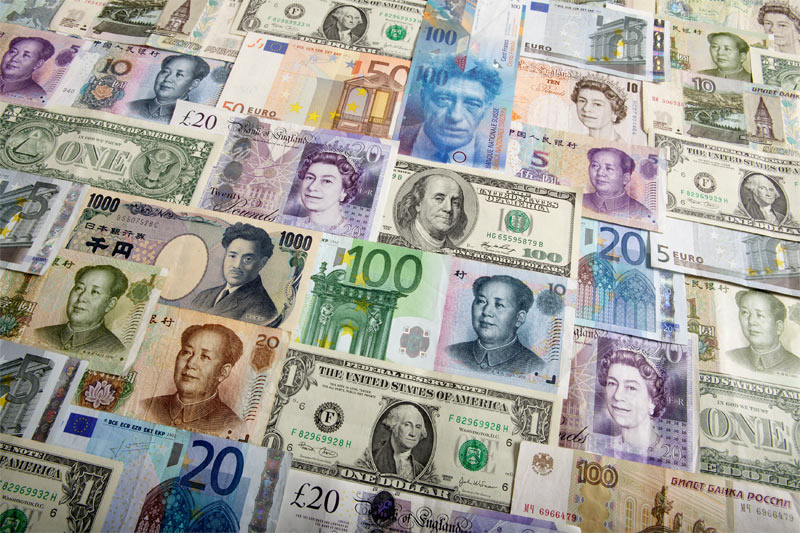Investing.com - The U.S. dollar was slightly lower against the euro and the pound on Thursday as optimism over a deal on the U.S. fiscal cliff dimmed and was higher against the yen after the Bank of Japan unveiled more stimulus measures.
During European morning trade, the greenback was lower against the euro, with EUR/USD easing up 0.14% to 1.3245.
Market sentiment remained subdued as growing doubts over whether a deal to avoid the U.S. fiscal cliff will be reached ahead of the January 1 deadline fuelled concerns that automatic tax hikes and spending cuts would be triggered.
The dollar was lower against the yen, with USD/JPY down 0.51% to 83.97.
The BOJ expanded the size of its asset-purchase program by JPY10 trillion to JPY101 trillion on Thursday, but stopped short of adopting a 2% targeted inflation rate, despite calls from incoming Prime Minister Shinzo Abe for the bank to implement more aggressive measures to combat deflation.
BoJ Governor Masaaki Shirakawa said the bank started discussions on longer-term price stability and would review guidelines at its next policy meeting in January.
The greenback was lower against the pound, with GBP/USD rising 0.12% to 1.6266.
Sentiment on sterling remained fragile after official data showed that U.K. retail sales were flat in November, compared to expectations for a 0.3% increase.
The greenback was hovering close to seven-and-a-half month low against the Swiss franc, with USD/CHF sliding 0.15% to 0.9118.
The greenback was edged lower against its Canadian, Australian and New Zealand counterparts, with USD/CAD dipping 0.01% to 0.9887, AUD/USD gaining 0.13% to trade at 1.0494 and NZD/USD inching up 0.10% to 0.8348.
Earlier Thursday, official data showed that New Zealand’s economy expanded by 0.2% in the third quarter, below analysts forecasts for 0.4% growth.
The dollar index, which tracks the performance of the greenback versus a basket of six other major currencies, was down 0.21% to an almost two-month low of 79.20.
The U.S. was to release the weekly report on initial jobless claims, as well as revised data on third quarter growth and data on manufacturing activity in Philadelphia later in the trading day. In addition, the U.S. was to publish industry data on existing home sales.
During European morning trade, the greenback was lower against the euro, with EUR/USD easing up 0.14% to 1.3245.
Market sentiment remained subdued as growing doubts over whether a deal to avoid the U.S. fiscal cliff will be reached ahead of the January 1 deadline fuelled concerns that automatic tax hikes and spending cuts would be triggered.
The dollar was lower against the yen, with USD/JPY down 0.51% to 83.97.
The BOJ expanded the size of its asset-purchase program by JPY10 trillion to JPY101 trillion on Thursday, but stopped short of adopting a 2% targeted inflation rate, despite calls from incoming Prime Minister Shinzo Abe for the bank to implement more aggressive measures to combat deflation.
BoJ Governor Masaaki Shirakawa said the bank started discussions on longer-term price stability and would review guidelines at its next policy meeting in January.
The greenback was lower against the pound, with GBP/USD rising 0.12% to 1.6266.
Sentiment on sterling remained fragile after official data showed that U.K. retail sales were flat in November, compared to expectations for a 0.3% increase.
The greenback was hovering close to seven-and-a-half month low against the Swiss franc, with USD/CHF sliding 0.15% to 0.9118.
The greenback was edged lower against its Canadian, Australian and New Zealand counterparts, with USD/CAD dipping 0.01% to 0.9887, AUD/USD gaining 0.13% to trade at 1.0494 and NZD/USD inching up 0.10% to 0.8348.
Earlier Thursday, official data showed that New Zealand’s economy expanded by 0.2% in the third quarter, below analysts forecasts for 0.4% growth.
The dollar index, which tracks the performance of the greenback versus a basket of six other major currencies, was down 0.21% to an almost two-month low of 79.20.
The U.S. was to release the weekly report on initial jobless claims, as well as revised data on third quarter growth and data on manufacturing activity in Philadelphia later in the trading day. In addition, the U.S. was to publish industry data on existing home sales.
